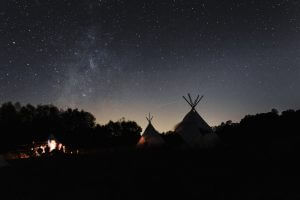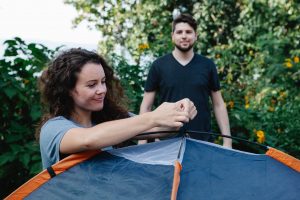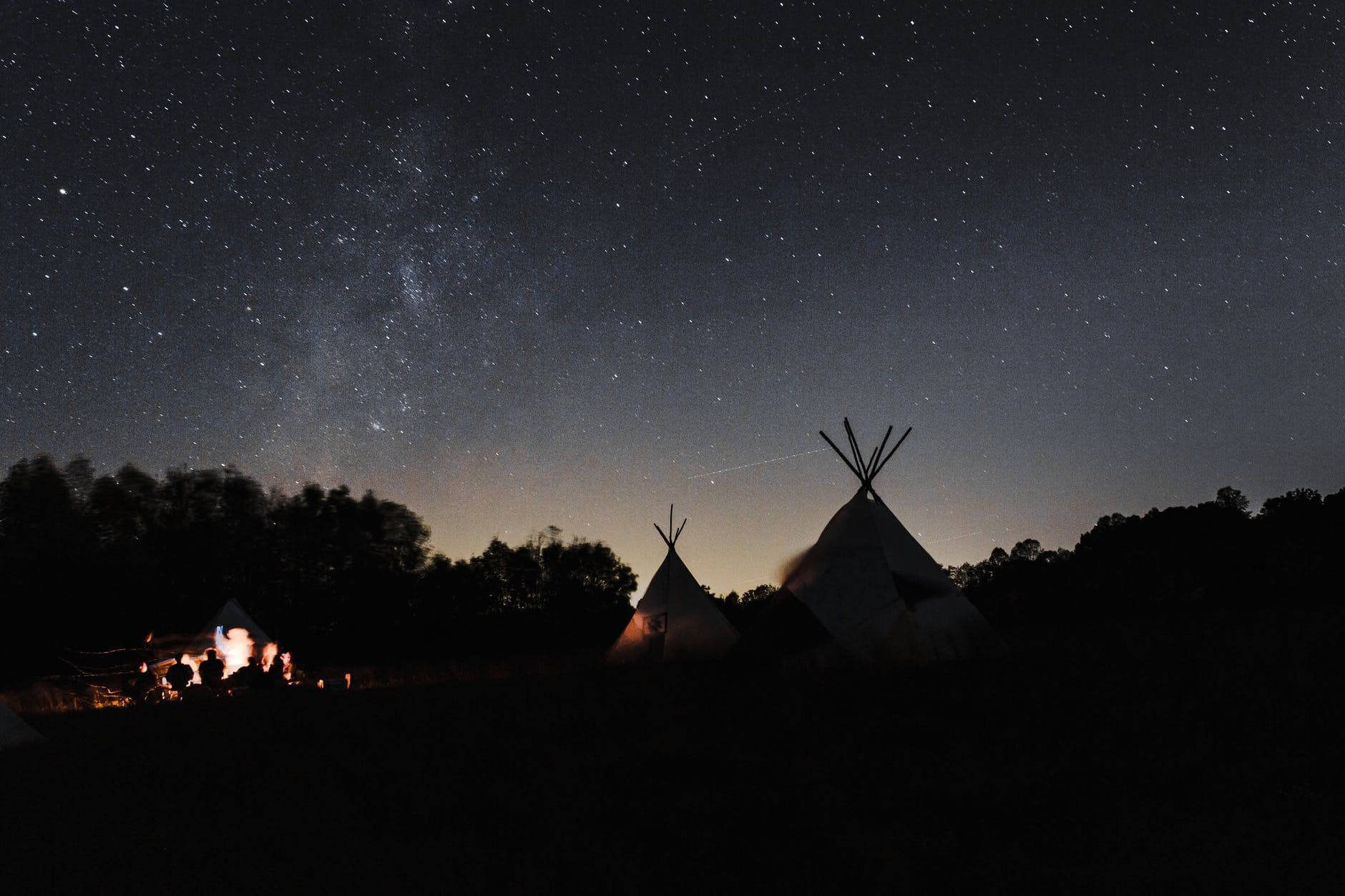
By Julie Landry
Now that the camping season has officially kicked off, it’s time to start planning and preparing for your next trip, or your first trip! One of the main concerns when it comes to tent camping is sleep.
It may not be the initial thought on your mind while preparing to go, but once you’re pitching your tent and prepping your campsite, it’ll set in. The ground isn’t the most forgiving when it comes to comfort.
It’s never perfectly flat and there could be rocks, sticks, acorns, pinecones, or all kinds of natural ground litter that can really affect your comfort. So, how do you get around that? How can you get a good night’s sleep while camping in a tent?
That’s what we are here for, we will tell you the different items and tips you can use to be as comfortable as possible on your camping trip.
Choosing Where to Pitch Your Tent
The first step to tackling this issue is picking the right place to set up your tent. Pitch your tent on the flattest ground you can find, and slightly higher than the surrounding area. In the scenario that it rains, pitching your tent on higher ground will prevent water from pooling under it.
Clear any limbs, sticks, rocks, and other debris from your chosen spot. Leaves and pine needles won’t poke and prod you during the night and can add additional cushioning and insulation on the floor of the tent. Be sure to use a footprint or plastic sheet for your tent to sit on for added comfort and protection.
Remember to follow the Leave No Trace principles and camp and travel on durable surfaces only. These durable surfaces include rock, sand, dry grasses, established campsites and trails, snow, and gravel.
Best Gear for Comfort While Sleeping in a Tent
Let’s go over the different camping gear you can use that will improve your night’s sleep while camping. Most of these items you can find and purchase at any local sports or camping store, Walmart, or online.

Sleeping Pads
Camping sleeping pads are one of the most common items that avid tent campers and backpackers use. Each sleeping pad is different, some are made from foam and others are self-inflating. Both provide a cushioned barrier between you and the tent floor. This helps not only for comfort but prevents heat loss by acting as a barrier from the cold ground.
Some have pillows made into the sleeping pad, while others do not. They come in varying thicknesses so you are able to choose whichever suits you best. Also, they are very affordable and come in a plethora of different styles.
Sleeping Bags
Your sleeping bag also plays a major role in comfort. Your sleeping bag is not only there to keep you warm, but to again provide you with additional cushioning from the ground. Some utilize down for insulation and others may have a cotton liner.
During the hot summer months, you may not think you need your sleeping bag, but you don’t have to sleep in it when it’s too warm. By laying on top of it and your sleeping pad you should be able to sleep more comfortably.
There are options of 4-season sleeping bags which usually state the temperatures they are best used in or summer sleeping bags that are much lighter for the warmer months.
They can range in pricing, but most are affordable and function much the same as those that are more expensive.
Air Mattresses
This is a great option for those that need more cushion while sleeping and if you’re staying at a campground. An air bed is larger and taller than any sleeping pad. They’re great for families, couples, and those that need more room while sleeping.
They take more time to set up because you’ll need to inflate them with an electric air pump, have an internal pump, or you’ll have to manually pump. They can vary in rigidity depending on how much air you put in them. However, they’re not quite as affordable as other options.
Additional Tips for Sleeping Comfortably While Camping
Managing your temperature is a key factor in sleeping comfortably in a tent. This is the most prolific issue with tents, especially during the summer. The best way to keep your tent cool in hot weather is to pitch it in the shade of trees, close to a body of water, or in a dip in the ground that’s lower than the surrounding area.

You can position your tent so that it is facing the direction of the wind so it gets plenty of air circulation. In some cases, you can even take your tent down during the heat of the day, and set it up again later on.
Space is another factor. Larger tents will have more ventilation and air circulation that will help you sleep better at night. Small tents are good at trapping heat inside which is better for the fall and winter months.
If you’re interested in larger tents for you and your family or if you’re a camping couple that enjoys having more space, then you can check out this article here to learn more about the best 12-person tents.
Conclusion
All the tips and tricks provided above are tried and true, at least in my experience when camping. They have proven effective enough that I’ve been able to sleep comfortably at night while in a tent. Even on a 4-week camping trip through the heart of the Adirondacks, my sleeping pad and sleeping bag got me through alone.
There is always the option of bringing a battery-operated fan, air conditioner, or heater designed for camping. However, they’re not the most affordable option and may be less convenient for those that are backpacking. Still, it is another option if you are someone that struggles to get comfortable temperature-wise at night.
Remember to have fun and practice the Leave No Trace principals anytime you’re hiking, camping, and enjoying your local wilderness areas!

Julie Landry
Julie is a freelance writer at cutecamper.com with a passion for the outdoors. She grew up camping, fishing, hiking, and kayaking; and now wants to provide people with tips that will enhance their outdoor experiences.














Leave a Reply